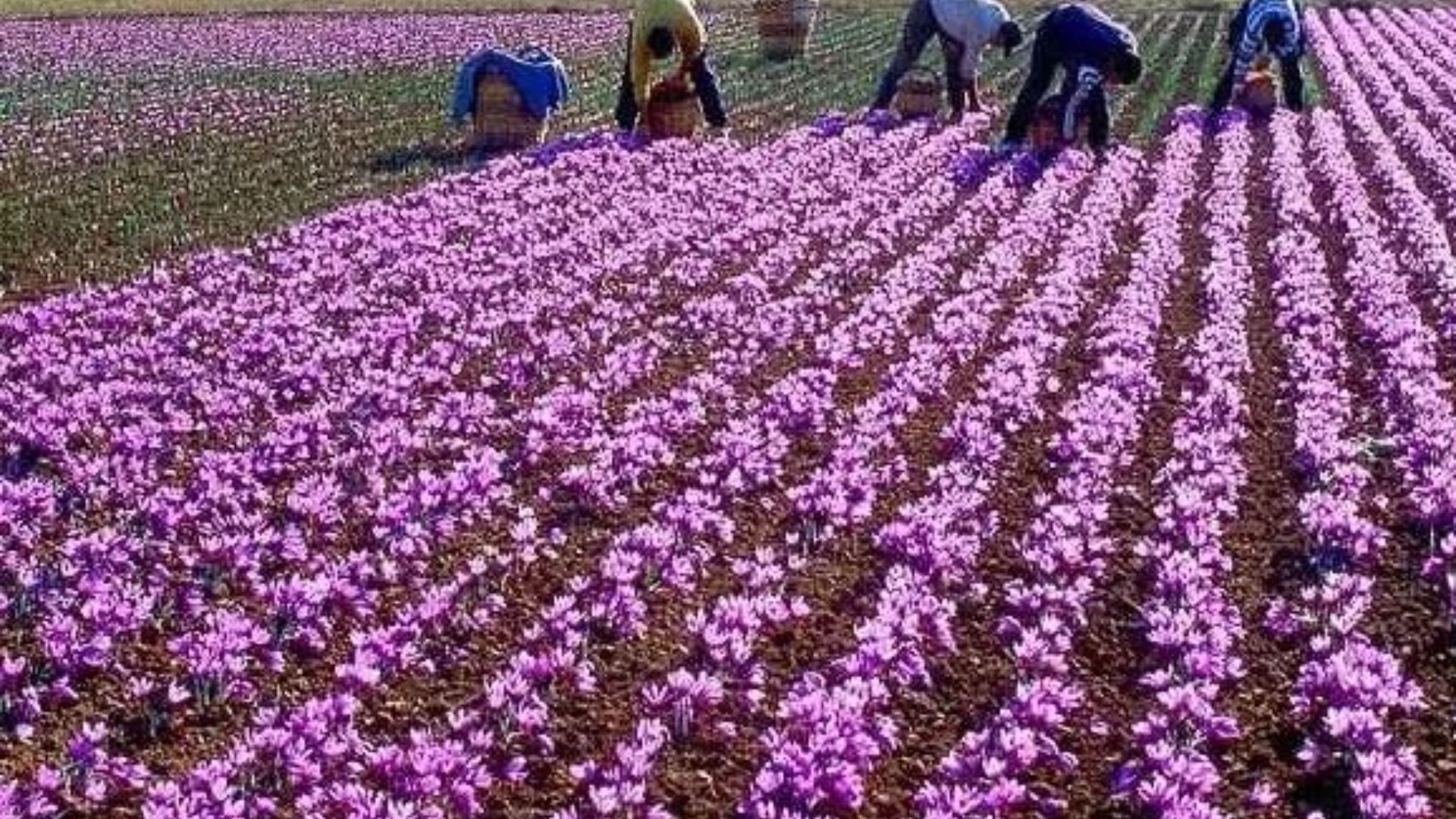
In the picturesque valleys of Kashmir, the vibrant saffron fields bloom each autumn, painting the landscape with hues of gold. Known as the “golden spice,” Kashmiri saffron is celebrated worldwide for its distinct flavor, aroma, and health benefits. However, the precious crop faces an uncertain future as global warming casts a shadow over its cultivation.
Kashmir’s saffron fields thrive in a delicate balance of temperature, humidity, and sunlight. Traditionally, the region’s climate has been ideal for saffron cultivation, with cold winters and warm, dry summers. Yet, rising global temperatures have altered weather patterns, leading to unpredictable rainfall and extreme temperatures.
Farmers, who have cultivated saffron for generations, report increasingly erratic seasons. “Last year, the rains came too early and then stopped abruptly,” says Abdul Rahim, a saffron farmer from Pampore. “This year, we faced a heatwave that scorched the flowers, impacting both yield and quality.”
Saffron is not only a cultural symbol of Kashmir but also a crucial source of income for many families. The unique climate conditions contribute to the labor-intensive process of harvesting, which remains largely manual. As the saffron yield declines due to climate change, farmers find it increasingly difficult to make a living.
Experts predict that if current climate trends continue, saffron production in Kashmir could decrease by up to 50% over the next few decades. This would have devastating effects not just on local economies, but also on the livelihoods of thousands of farmers who depend on the spice for their survival.
In response to the looming crisis, some farmers are exploring sustainable practices and new cultivation techniques. “We are trying to adapt by using organic fertilizers and experimenting with irrigation methods,” Rahim explains. Additionally, local agricultural universities are conducting research to develop saffron strains that are more resilient to climate variations.
Community initiatives are also gaining traction. Farmers are collaborating to share knowledge and resources, forming cooperatives to strengthen their bargaining power and improve market access. Workshops on climate resilience and sustainable farming are being organized to educate the next generation of farmers.
The saffron harvest is not just about economics; it is deeply rooted in the cultural fabric of Kashmir. Festivals celebrating the saffron bloom draw tourists and locals alike, highlighting the spice’s historical significance in Kashmiri cuisine and tradition.
As global warming threatens this cherished crop, cultural leaders and environmental activists are calling for urgent action. “We must protect our saffron heritage,” says Dr. Farah Shah, an environmental scientist. “Preserving saffron cultivation is not just an agricultural issue; it’s about safeguarding our identity.”
The future of Kashmiri saffron lies in the hands of both farmers and policymakers. Addressing climate change requires a multi-faceted approach, combining sustainable farming practices with effective environmental policies. As the world becomes increasingly aware of climate change’s impact on food security, the plight of Kashmir’s saffron farmers should resonate far and wide.
In this golden harvest, the spice of life is at stake, and it is up to all of us to help preserve it. The resilience of Kashmir’s farmers and their commitment to their craft may hold the key to ensuring that saffron continues to flourish for generations to come.















